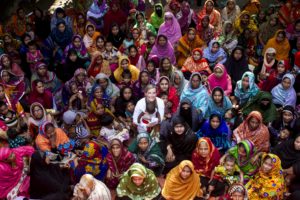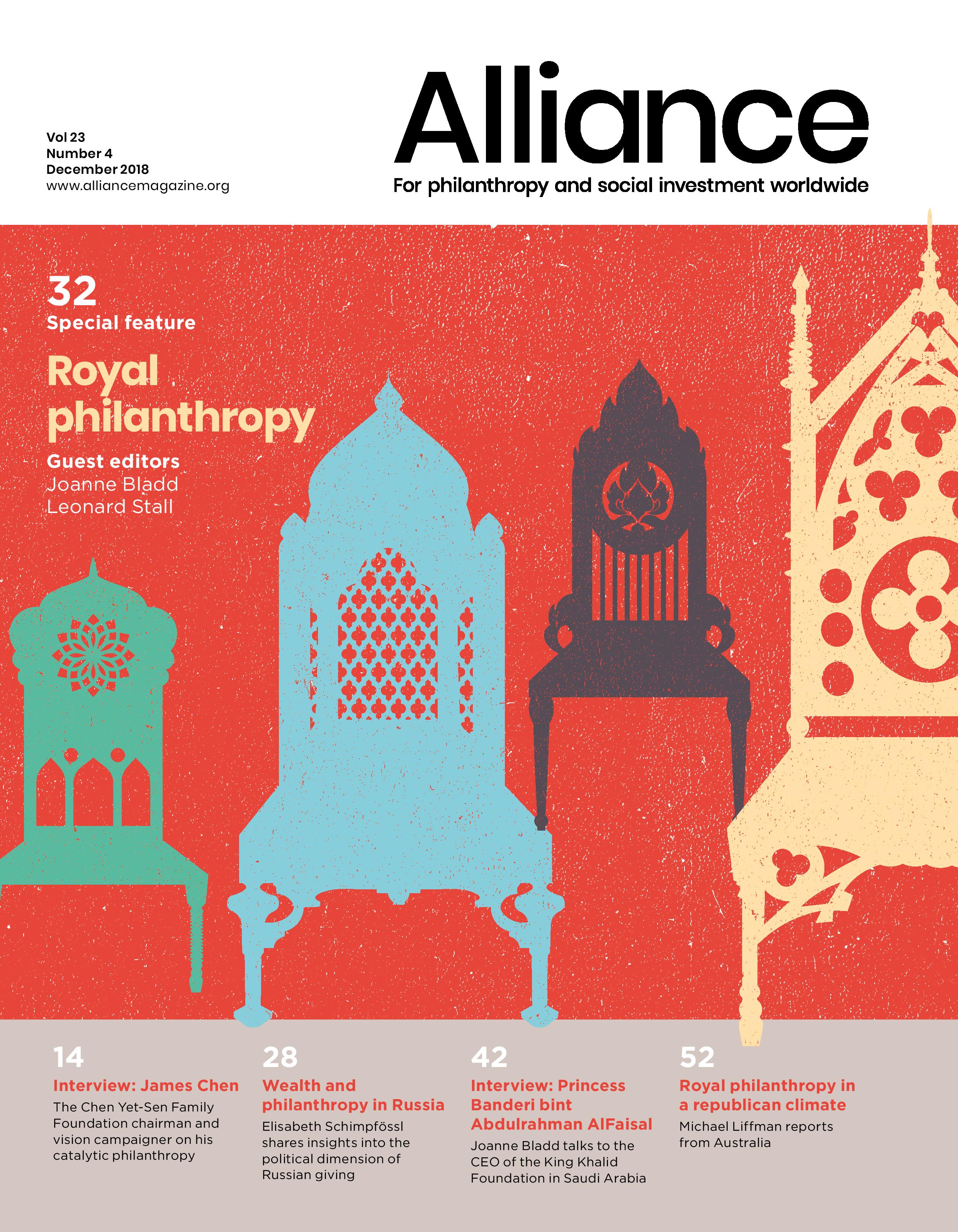The Queen Elizabeth Diamond Jubilee Trust shows how royal support for philanthropy can have a decisive effect on gathering the resources to tackle global problems
When Her Majesty The Queen celebrated her Diamond Jubilee in 2012, it was her wish that in the place of presents, a charitable initiative should be established to benefit the people of the Commonwealth, an imaginative initiative which would use combined efforts to bring about change on a global scale.
The response was profound. The Queen Elizabeth Diamond Jubilee Trust, as it became known, received donations of £100 million from individuals, organisations and foundations from all over the Commonwealth, and from the governments of its member nations, big and small. In support of this collective effort, Commonwealth leaders agreed the Trust should make a decisive contribution in two areas: young people, in recognition of the fact that the world now has the largest youth population it has ever seen, and avoidable blindness. Four out of five people who are blind today are so as a result of causes which can be entirely avoided.
Over the past four years, the Trust has successfully increased capacity and access to quality eye care in Commonwealth countries, and advanced significantly the international effort to eliminate trachoma worldwide.
Speed and scale
With just five years in which to deliver successful programmes, the Trust established a network of partnerships right across the Commonwealth, bringing together those best placed to make positive change in communities and countries alike. I have worked in international development for over two decades. In all that time I have never seen a coming together of partners, practitioners and policy-makers with such willingness, bound by affection for The Queen and united by the belief that positive change can occur.
We’ve supported research and invested in ground-breaking technology, and new networks of support between specialists across Commonwealth countries have been convened.
Over the past four years, the Trust, through the support of its donors, the guidance of governments and the efforts of partners, has successfully increased capacity and access to quality eye care in Commonwealth countries, and advanced significantly the international effort to eliminate trachoma worldwide.
It has been a trailblazer in championing the issues of diabetic retinopathy and retinopathy of prematurity – two entirely preventable forms of irreversible blindness – across the Commonwealth, having identified and supported a range of solutions adapted to different local conditions, to ensure that people do not lose their sight as a result of these devastating conditions.
The study showed that for every £1 invested by the Trust in tackling avoidable blindness across the Commonwealth, £12 is returned through releasing people’s potential to work, support their families and access education.
Expertise on eye health across the Commonwealth has been shared, and healthcare professionals trained, to enable quality eye health services to be delivered in low- and middle-income countries, and reach those who live in the most remote communities. We’ve supported research and invested in ground-breaking technology – for example, now a smartphone is used to conduct eye examinations in rural Africa, replacing the need for urban clinics and heavy equipment – and new networks of support between specialists across Commonwealth countries have been convened.
The rewards of this work have been humbling. Earlier this year, we commissioned PricewaterhouseCoopers to conduct an economic analysis on the benefits of investing in vision in the Commonwealth. The study showed that for every £1 invested by the Trust in tackling avoidable blindness across the Commonwealth, £12 is returned through releasing people’s potential to work, support their families and access education.
The importance of collaboration
Funding programmes and seeing the results and lives changed is at the very core of the Trust’s work. Yet it’s the spirit of collaboration at all levels – working with ministers and their teams to ensure there is government ownership of the work we’re setting in train; involving experts and following the guidance they set; and combining resources with partners under a shared vision and clear goal – that has really enabled the Trust’s work to effect change at scale in such a short amount of time.
When The Queen spoke at the formal opening of CHOGM, there was talk of pride. The pride that she and her family has in the programmes in which they play a part – and of the good that has been achieved as a result. The Trust is one of many examples of this.
It is also this collaborative spirit that has led to the growing recognition of the importance of eye health as a universal issue that affects individuals and families regardless of where they live in the world. Two hundred and fifty three million people worldwide are visually impaired, and 36 million are blind. Yet nearly 80 per cent of them need not be.
Securing commitment to end a global problem

Vice-patron of The Queen Elizabeth Diamond Jubilee Trust, the Countess of Wessex visits communities in Bangladesh at risk of losing their sight due to diabetes. Credit: The Queen Elizabeth Diamond Jubilee Trust
What I’ve noticed has changed since the Trust began its work four years ago, is that there is now a belief that for the first time in history, we can end avoidable blindness and visual impairment for everyone, everywhere, within a generation. Nothing demonstrates this more than when, at this year’s Commonwealth Heads of Government Meeting (CHOGM), all 53 Commonwealth countries committed – for the first time – to take action towards achieving accessible eye health for all, and to eliminate trachoma as a public health problem by 2020.
When The Queen spoke at the formal opening of CHOGM, there was talk of pride. The pride that she and her family has in the programmes in which they play a part – and of the good that has been achieved as a result. The Trust is one of many examples of this. I cannot think of a better legacy for her lifetime of dedication and service to the people of the Commonwealth than one which is preventing millions from losing their sight and strengthening the health systems on which they depend.
Dr Astrid Bonfield CBE is chief executive of The Queen Elizabeth Diamond Jubilee Trust.
Email astrid.bonfield@qejubileetrust.org
Twitter @AstridBonfield








Comments (0)